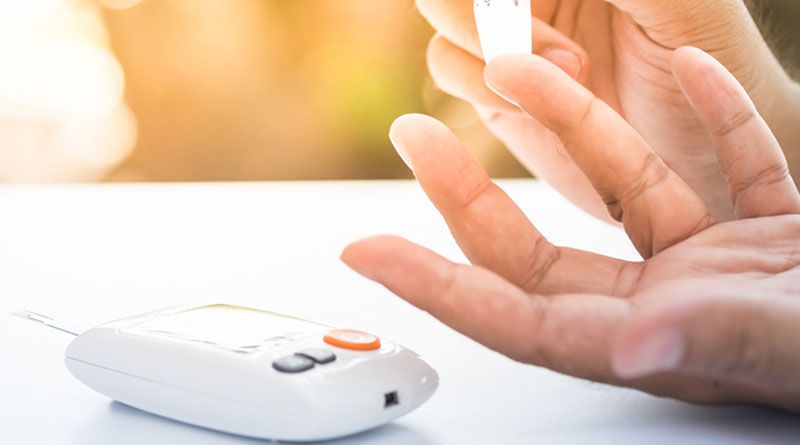Introduction
How do you find out that your blood sugar levels aren’t normal in the normal range? Unless your blood glucose level is significantly high or low, your body won’t show any concerning symptoms. However, it is possible that you don’t always experience high or low blood glucose symptoms. Many patients with type 2 diabetes don’t experience the typical symptoms of high blood sugar, making it common for such people to go undetected for many years.
How to Test Your Blood Sugar Levels
A glucose metre is an excellent tool for determining your blood glucose level. This entails applying pressure to the finger with a lancet to squirt a blood sample upon a testing kit, which is then inserted into the metre to obtain a reading. You might be able to get a metre for free from your specialist, but test strips and vials will cost you.
Using a continuous glucose monitor, or CGM, which measures glucose in the interstitial fluid, typically every five minutes, is another approach to keeping track of your blood sugar levels. The cost of continuous glucose monitoring is high.
Average Blood Sugar Range
The normal blood sugar range in children under the age of six varies between roughly 80 and 200 mg/dL per day. The level of glucose in their body will change from the moment they wake up until after they eat a meal and once again just before night. This range is considered healthy. Due to this, parents may need to check their children’s blood sugar levels in the middle of the night if they have diabetes or hypoglycemic episodes. A continuous glucose monitor, which constantly displays glucose readings and largely replaces the need for finger sticks, is worn by many children with type 1 diabetes.
The normal blood sugar range in children between the ages of 6 and 12 varies between 80 and 180 mg/dL per day. After a meal, blood sugar levels rise due to the body converting carbs into glucose, which is circulated throughout the bloodstream. Protein and fat are other macronutrients that convert to glucose, but more slowly. Many individuals having diabetes learn how to take advantage of these variables.
Teenagers should have a normal blood sugar range between 70 and 150 mg/dL. In diabetes, the teenage years are the most challenging, since treating this health condition demands a lot of responsibility and the hormone element.
Adults without diabetes should have fewer than 100 mg/dL of blood glucose when fasting for a minimum of eight hours. Adults without diabetes should have blood glucose levels between 90 and 110 mg/dL two hours after eating.
Signs of Low Blood Sugar
A condition known as low blood sugar or hypoglycemia occurs whenever blood glucose levels drop significantly. Whenever people take too much insulin, they risk having hypoglycemia. This happens if they time their insulin dose improperly without food or exercise more than required.
Your healthcare professional will explain when to check your blood glucose levels and how and when to manage low blood sugar. Less than 70 mg/dL is typically regarded as low blood sugar. If your sugar levels are below 54 mg/dL, you are at risk of low or extremely low blood sugar levels that could deplete glucose from the brain and cause strokes or even death.
The following list includes several of the most typical signs of low blood sugar:
- Feeling dizzy
- Confused
- Enduring a rapid heartbeat
- Hunger
- Drowsiness
- Convulsing
- Tingling lips
Signs of High Blood Sugar
High blood sugar is referred to as hyperglycemia. When the body can’t utilise insulin properly or doesn’t produce enough of it, it results in hyperglycemia. High blood sugar levels can result from various factors, including Type 1 or Type 2 diabetes, anxiety, disease or the dawn effect (abnormal increase in blood sugar levels in the morning, particularly in patients with diabetes).
The following are some of the most typical signs of hyperglycemia:
- Tired
- Heightened hunger and thirst
- Often urinating
- Loss of weight
- Brain fog
- Distorted vision
- Difficulty paying attention
Let us discuss food items that may help you maintain a normal blood sugar range.
- Broccoli for Heart Health
Experts say that a substance called sulforaphane, found in broccoli, can do wonders to reduce blood sugar and maintain heart health. Additionally, it has a lot of antioxidants that help battle against free radicals. - Seafood Items
Seafood items, especially fish and shellfish, are rich sources of protein, good fats, minerals, enzymes, and antioxidants and may help control blood sugar levels. - Is Jaggery Good for Diabetes?
Is Jaggery Good for Diabetes? is something all people with diabetes think aboutJaggery is undoubtedly healthier than sugar, but people with diabetes should only consume jaggery in moderation.
Conclusion
If you have diabetes, maintaining a timetable and keeping track of your sugar levels throughout the day is required. Doing this will help you maintain normal blood glucose and avoid health complications. For non-diabetic people, here is a summarised value guide of blood sugar levels: The typical fasting blood sugar of 70-99 mg/dL (3.9-5.5 mmol/L) is considered normal. Two hours after eating, the typical blood sugar levels of an individual should be less than 7.8 mmol/L (140 mg/dL). For people who have diabetes, the American Diabetes Association recommends these target blood sugar levels: Between 80 and 130 mg/dL (4.4 and 7.2 mmol/L) and less than 180 mg/dL (10 mmol/L) after meals.

Namaste UI collaborates closely with clients to develop tailored guest posting strategies that align with their unique goals and target audiences. Their commitment to delivering high-quality, niche-specific content ensures that each guest post not only meets but exceeds the expectations of both clients and the hosting platforms. Connect with us on social media for the latest updates on guest posting trends, outreach strategies, and digital marketing tips. For any types of guest posting services, contact us on info[at]namasteui.com.

